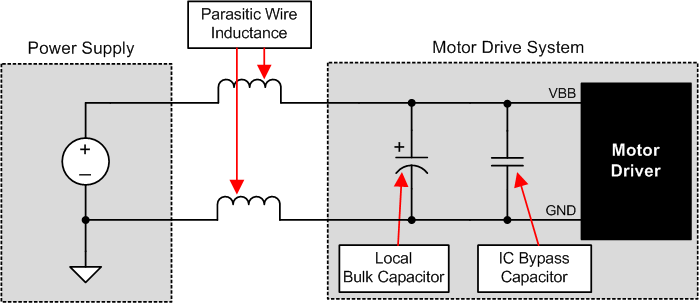SLVSH03 December 2023 DRV8234
PRODUCTION DATA
- 1
- 1 Features
- 2 Applications
- 3 Description
- 4 Device Comparison
- 5 Pin Configuration and Functions
- 6 Specifications
-
7 Detailed Description
- 7.1 Overview
- 7.2 Functional Block Diagram
- 7.3
Feature Description
- 7.3.1 External Components
- 7.3.2 Summary of Features
- 7.3.3 Bridge Control
- 7.3.4 Current Sense and Regulation (IPROPI)
- 7.3.5 Stall Detection
- 7.3.6
Ripple Counting
- 7.3.6.1
Ripple Counting Parameters
- 7.3.6.1.1 Motor Resistance Inverse
- 7.3.6.1.2 Motor Resistance Inverse Scale
- 7.3.6.1.3 KMC Scaling Factor
- 7.3.6.1.4 KMC
- 7.3.6.1.5 Filter Damping Constant
- 7.3.6.1.6 Filter Input Scaling Factor
- 7.3.6.1.7 Ripple Count Threshold
- 7.3.6.1.8 Ripple Count Threshold Scale
- 7.3.6.1.9 T_MECH_FLT
- 7.3.6.1.10 VSNS_SEL
- 7.3.6.1.11 Error Correction
- 7.3.6.2 RC_OUT Output
- 7.3.6.3 Ripple Counting with nFAULT
- 7.3.6.1
Ripple Counting Parameters
- 7.3.7 Motor Voltage and Speed Regulation
- 7.3.8 Protection Circuits
- 7.4 Device Functional Modes
- 7.5 Programming
- 7.6 Register Map
-
8 Application and Implementation
- 8.1 Application Information
- 8.2 Typical Application: Brushed DC Motor
- 9 Power Supply Recommendations
- 10Layout
- 11Device and Documentation Support
- 12Revision History
Package Options
Mechanical Data (Package|Pins)
- RTE|16
Thermal pad, mechanical data (Package|Pins)
- RTE|16
Orderable Information
9.1 Bulk Capacitance
Having appropriate local bulk capacitance is an important factor in motor drive system design. Having more bulk capacitance is generally beneficial, while the disadvantages are increased cost and physical size.
The amount of local capacitance needed depends on a variety of factors, including:
- The highest current required by the motor system
- The capacitance of the power supply and ability to source current
- The amount of parasitic inductance between the power supply and motor system
- The acceptable voltage ripple
- The type of motor used (brushed DC, brushless DC, stepper)
- The motor braking method
The inductance between the power supply and motor drive system limits how the rate current can change from the power supply. If the local bulk capacitance is too small, the system responds to excessive current demands or dumps from the motor with a change in voltage. When adequate bulk capacitance is used, the motor voltage remains stable and high current can be quickly supplied.
The data sheet generally provides a recommended value, but system-level testing is required to determine the appropriate sized bulk capacitor.
 Figure 9-1 Example Setup of Motor Drive System With External Power Supply
Figure 9-1 Example Setup of Motor Drive System With External Power SupplyThe voltage rating for bulk capacitors should be higher than the operating voltage, to provide margin for cases when the motor transfers energy to the supply.